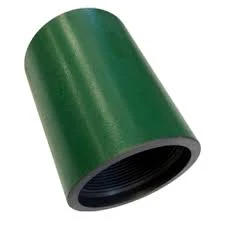- Afrikaans
- Albanian
- Amharic
- Arabic
- Armenian
- Azerbaijani
- Basque
- Belarusian
- Bengali
- Bosnian
- Bulgarian
- Catalan
- Cebuano
- Corsican
- Croatian
- Czech
- Danish
- Dutch
- English
- Esperanto
- Estonian
- Finnish
- French
- Frisian
- Galician
- Georgian
- German
- Greek
- Gujarati
- Haitian Creole
- hausa
- hawaiian
- Hebrew
- Hindi
- Miao
- Hungarian
- Icelandic
- igbo
- Indonesian
- irish
- Italian
- Japanese
- Javanese
- Kannada
- kazakh
- Khmer
- Rwandese
- Korean
- Kurdish
- Kyrgyz
- Lao
- Latin
- Latvian
- Lithuanian
- Luxembourgish
- Macedonian
- Malgashi
- Malay
- Malayalam
- Maltese
- Maori
- Marathi
- Mongolian
- Myanmar
- Nepali
- Norwegian
- Norwegian
- Occitan
- Pashto
- Persian
- Polish
- Portuguese
- Punjabi
- Romanian
- Russian
- Samoan
- Scottish Gaelic
- Serbian
- Sesotho
- Shona
- Sindhi
- Sinhala
- Slovak
- Slovenian
- Somali
- Spanish
- Sundanese
- Swahili
- Swedish
- Tagalog
- Tajik
- Tamil
- Tatar
- Telugu
- Thai
- Turkish
- Turkmen
- Ukrainian
- Urdu
- Uighur
- Uzbek
- Vietnamese
- Welsh
- Bantu
- Yiddish
- Yoruba
- Zulu
what is the difference between casing and tubing?
The Difference Between Casing and Tubing in Oil and Gas Production
The Difference Between Casing and Tubing in Oil and Gas Production
Casing is a series of steel pipes that are inserted into a well after it has been drilled. Its primary function is to support the wellbore, preventing the collapse of the walls. Casing also isolates the well from surrounding formations, which helps to protect fresh water aquifers from contamination and ensures that the well remains stable during production. Different sizes and grades of casing are utilized based on the depth of the well and the conditions encountered during drilling. The most common types of casing are surface casing, intermediate casing, and production casing. Each serves a specific purpose and is placed at different depths within the well.
what is the difference between casing and tubing?

On the other hand, tubing is a smaller diameter pipe that is inserted into the wellbore through the casing. It is specifically designed for the transport of oil, gas, or other fluids from the reservoir to the surface. Tubing is typically installed after the casing has been set and cemented in place. Its main function is to serve as the conduit through which hydrocarbons flow, facilitating the extraction process. Tubing can be removed and replaced more easily than casing, allowing operators to conduct maintenance or repairs without requiring extensive re-drilling operations.
One of the key differences between casing and tubing lies in their function. While casing is primarily concerned with the structural integrity and safety of the wellbore, tubing focuses on the efficient movement of product to the surface. Furthermore, casing is generally larger in diameter and must withstand substantial pressures and structural stresses, whereas tubing, although designed to handle pressure, is often lighter and more flexible.
In summary, casing and tubing are integral components of oil and gas wells, each with distinct roles. Casing provides essential support and safety, while tubing enables the flow of hydrocarbons. Understanding their differences is crucial for anyone involved in the drilling and production process, as both elements are vital for effective resource extraction and overall operational efficiency.
-
Tubing Pup Joints: Essential Components for Oil and Gas OperationsNewsJul.10,2025
-
Pup Joints: Essential Components for Reliable Drilling OperationsNewsJul.10,2025
-
Pipe Couplings: Connecting Your World EfficientlyNewsJul.10,2025
-
Mastering Oilfield Operations with Quality Tubing and CasingNewsJul.10,2025
-
High-Quality Casing Couplings for Every NeedNewsJul.10,2025
-
Boost Your Drilling Efficiency with Premium Crossover Tools & Seating NipplesNewsJul.10,2025







